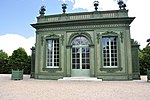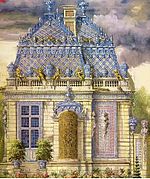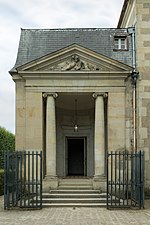Gardens of Versailles

The Gardens of Versailles (French: Jardins du château de Versailles [ʒaʁdɛ̃ dy ʃɑto d(ə) vɛʁsɑj]) occupy part of what was once the Domaine royal de Versailles, the royal demesne of the château of Versailles. Situated to the west of the palace, the gardens cover some 800 hectares of land, much of which is landscaped in the classic French formal garden style perfected here by André Le Nôtre. Beyond the surrounding belt of woodland, the gardens are bordered by the urban areas of Versailles to the east and Le Chesnay to the north-east, by the National Arboretum de Chèvreloup to the north, the Versailles plain (a protected wildlife preserve) to the west, and by the Satory Forest to the south. Administered by the Public Establishment of the Palace, Museum and National Estate of Versailles, an autonomous public entity operating under the aegis of the French Ministry of Culture, the gardens are now one of the most visited public sites in France, receiving more than six million visitors a year.In addition to the meticulous manicured lawns, parterres, and sculptures are the fountains, which are located throughout the garden. Dating from the time of Louis XIV and still using much of the same network of hydraulics as was used during the Ancien Régime, the fountains contribute to making the gardens of Versailles unique. On weekends from late spring to early autumn, the administration of the museum sponsors the Grandes Eaux – spectacles during which all the fountains in the gardens are in full play. Designed by André Le Nôtre, the Grand Canal is the masterpiece of the Gardens of Versailles. In the Gardens too, the Grand Trianon was built to provide the Sun King with the retreat he wanted. The Petit Trianon is associated with Marie Antoinette, who spent her time there with her closest relatives and friends.In 1979, the gardens along with the château were inscribed on the UNESCO World Heritage List for their cultural importance during the 17th and 18th centuries.
Excerpt from the Wikipedia article Gardens of Versailles (License: CC BY-SA 3.0, Authors, Images).Gardens of Versailles
Allée de La Petite Venise, Versailles
Geographical coordinates (GPS) Address Nearby Places Show on map
Geographical coordinates (GPS)
| Latitude | Longitude |
|---|---|
| N 48.808055555556 ° | E 2.1083333333333 ° |
Address
Allée de La Petite Venise
78000 Versailles, Notre-Dame
Ile-de-France, France
Open on Google Maps










